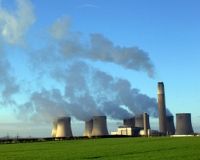

The Scottish Environment Protection Agency (SEPA) has published the Scottish Pollutant Release Inventory (SPRI) data for 2022.
The SPRI is a Pollutant Release and Transfer Register (PRTR) and has the primary purpose of making publicly available officially reported annual releases of specified pollutants to air and water from SEPA-regulated industrial facilities. It also provides information on off-site transfers of waste and waste-water from these facilities.
SPRI provides a valuable picture of the amount of pollutants released in Scotland from SEPA-regulated industrial sites.
It is a publicly accessible electronic database which aims to provide information for policy makers, academics, and the public about the pressure Scottish industry puts on the environment through greenhouse gas emissions.
The SPRI data is collected, quality assured and made public under the requirements of Freedom of Information, and can be compared with PRTR information from other countries. SPRI datasets from 2002 to the present year (except 2003) are available and reported annually.
Operators of sites carrying out specific activities (67 activities covering 10 major sectors) above defined capacity thresholds are obliged to report to SPRI on an annual basis. The activities and thresholds are largely determined by European reporting requirements but some thresholds have been lowered to be relevant to pollutant releases in the UK and Scotland.
The statistics show the global warming potential of greenhouse gas emissions, measured in carbon dioxide equivalent, was up 2.7% between 2021 and 2022.
Key information for 2022 included that there were:
This rise follows on from two years of reductions, which were largely attributed to temporary site closures due to pandemic restrictions and a shift in production levels. However, the 2022 overall emissions did not return to pre-2020 levels, hinting at a continued long-term downward trend.
For more information on this subject, see: